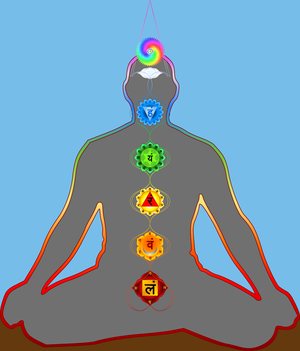So you've probably heard a little about yoga and wondered what it's all about. You probably have a few preconceptions and maybe an image of an old man with a long beard sitting in the lotus position springs into your head in automatic association with the word. While old men (and women) certainly can benefit from a regular yoga practice, there's a lot more to it than that! So let's go through step by step what you can expect in a typical yoga session.
Step One: The
| Vitruvian Man by Leonardo da Vinci, Galleria dell' Accademia, Venice (1485-90) (Photo credit: Wikipedia) |
Most Yoga classes begin in a standing position. There are both mental and physical reasons for this and they are closely connected. The standing position is the most natural Human position there is. Leonardo Da Vinci produced a famous scientific picture of the symmetry of the human body when it is in it's natural standing position. The outstretched arms and legs can have a perfect circle drawn around them and this is true of everyone regardless of their height or weight. What this means is that a standing pose comes naturally to us - we are not worried about getting it wrong and we can concentrate of the state of the body. Breathing exercises will be a key part of the warm up stage for your routine. This is the only time in your life you will be 'taught' to breath and it's a skill which allows people to restore calm to their bodies and thoughts.
Step Two: The Main Routine
This is the heart of your Yoga session which will vary the greatest depending on what forms of Yoga you are learning. While the individual exercises you will be doing are going to be quite different, the nature of them will be very similar. This will mean moving into certain poses and positions and holding those poses to allow the body to stretch out muscles and muscle groups that in many cases haven't been given much attention during the week. Some yoga teachers will talk to you about energy points or chakras. These are important junctions in your body where congestion occurs and stretching them out allows energy to flow freely around your body.
| Siddhasana, Yoga Asana, adept's or perfect pose. (Photo credit: Wikipedia) |
While the main session is about releasing pent up energies, this stage of your yoga workout is all about allowing that energy to flow around your body. Many people have trouble with thinking about some strange mystic force that is flowing through you and driving it to certain parts of your body. If you are one of them just mentally substitute the word 'energy' with the word 'blood'. We know that the job of blood is to carry nutrients and oxygen around our body, and we know that if any part of our body is lacking in this supply that we will become ill, so it's not a huge stretch to think of blood as the mystic energy force that brings health around our body, and exercises such as yoga as being the method of ensuring the smooth and successful flow of that blood.
There are many different branches of yoga, but most yoga workouts will consist of these three steps. The poses and style of what is contained in these steps may vary, but all of them provide great benefits for your whole body. Check back later this week for some examples and a fun yoga workout!



No comments:
Post a Comment